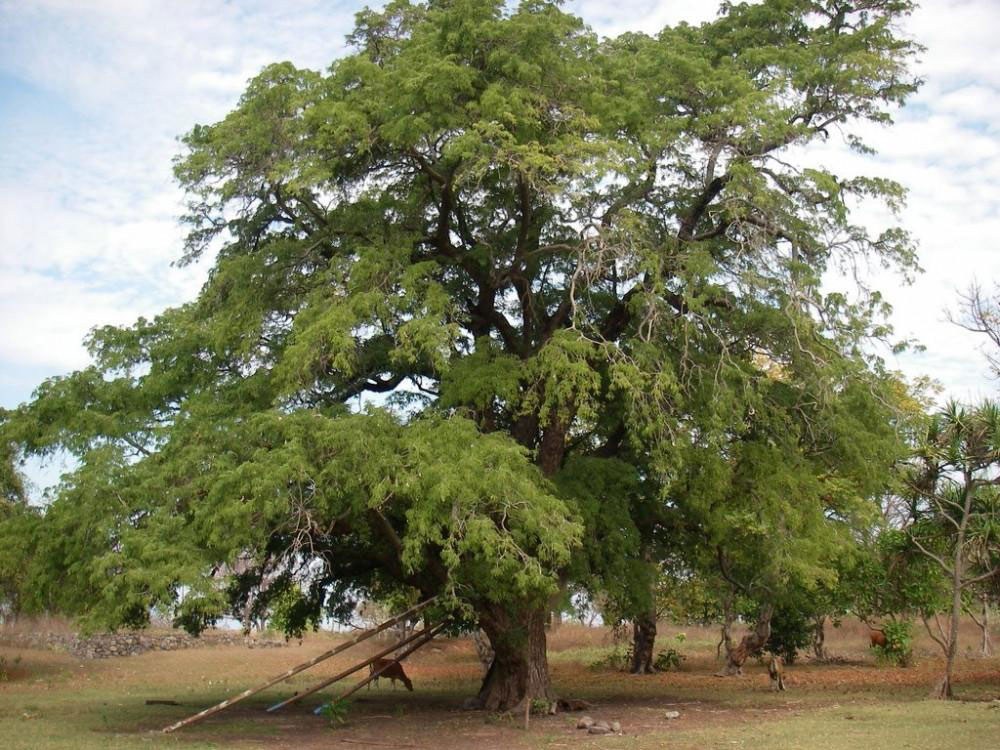Chinch, Imli - Tamarind

Tamarindus indica
Summary
Scientific Classification
Kingdom: Plantae
Division: Angiospermae
Class: Dicotyledonae
Order: Fabales
Family: Fabaceae
Genus: Tamarindus
Species: T.indica
Scientific Name: Tamarindus indica L.
Common names
English: Tamarind, Sampalok, Indian date.
Hindi: Imli.
Marathi: Chinch.
Kannada: Hunse.
Description
- Habit and Habitat: A large evergreen tree. Low altitude woodland, savannahand bush, often associated with termite moulds.
- Distribution: Probably originating in tropical Africa, it is now widespread through the tropics and subtropics.
- Morphology:
Leaf: Paripinnate compound, leaflets10-20 pairs, oblong, obtuse, stipules linear, caduceus.
Inflorescence: Terminal racemes.
Flowers: Pedicels articulated below the calyx, bracts concave, and bracteoles small. Calyx conelike, segments 4, unequal, oblomg, obtuse. Petals 5, 3 fertile, the other 2 rudimentary, obovate-oblong, yellow with pink-red stripes.
Androecium: Stamens 10, 3 fertile, united above half way up, the rest rudimentary, as small scales or bristles.
Gynoecium: Ovary stalked, ovules 8, 12 or more, stigma capitate.
Fruit: Pod curved, indehiscent, with a tuft, scaly epicarp and an edible pulpy, acid mesocarp.
Seeds: 3-12, obovate-oblong, truncate.
Flowering and Fruiting time: May-July. - Propagation: By seeds, cuttings of greenwood, air layering, Grafting.
- Importance: Cultivated for its edible fruits. The bark is used for loss of sensation in paralysis. The leaves are applied on inflammation.
- Location:
 Trees of Empress Botanical Garden - Project supported by
Trees of Empress Botanical Garden - Project supported by